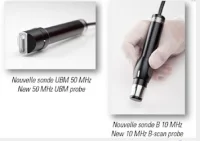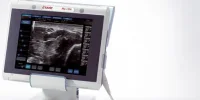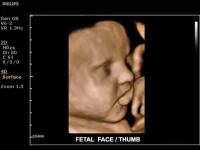Children are often admitted to emergency departments with blunt head trauma. The examinations for skull fracture and for traumatic brain injury often require CT scanning, the gold standard for diagnosis of skull fractures. However its drawbacks are that paediatric patients may need sedation and are exposed to ionising radiation.
This prospective study looked at whether using ultrasound at the bedside in the emergency department can accurately diagnose skull fractures when compared to head CT.
Cranial bedside ultrasound imaging was performed on patients by emergency physicians (who had participated in a 16 hour ultrasound training curriculum) and compared to the results of the CT scan in a consecutive series of children presenting with head trauma.
Results from 55 patients were analysed. Cranial fractures were seen on the CT scan in 35 (63.6%) of the 55 patients; 20 (36.4%) CT scans were interpreted as normal. Emergency ultrasound scans identified each fracture in the correct location with no false negatives, resulting in a sensitivity of 100% (95% confidence interval [CI] 88.2–100). One (1.8%) of the 55 ultrasound scans was interpreted as positive for a skull fracture, but the CT scan was read as normal. Nineteen (34.5%) of the ultrasound
scans that were negative for fracture were subsequently validated by negative CT scans, yielding an overall specificity of emergency ultrasound for cranial fractures of 95.0% (95% CI 75.0–99.9) Positive and negative predictive values were 97.2% (95% CI 84.6–99.9%) and 100% (95% CI 80.2–100%), respectively.
As this is a simple examination, and emergency physicians need minimal experience to provide an accurate diagnosis and it does not use ionising radiation, the authors recommend that emergency physicians consider ultrasound in the evaluation of paediatric head trauma. Bedside emergency ultrasound of the skull may accurately diagnose cranial fractures in head-injured children with visible scalp injuries when compared to CT scanning.
The authors conclude that ultrasound may be a useful tool to incorporate in minor head injury prediction rules, and should be investigated further. investigation.
Reference: Niccolò Parri, Bradley J. Crosby, Casey Glass, Francesco Mannelli, Idanna Sforzi, Raffaele Schiavone, Kevin Michael Ban. Ability of Emergency Ultrasonography to Detect Pediatric Skull Fractures: A Prospective, Observational Study. The Journal of Emergency Medicine Volume 44, Issue 1 , Pages 135-141 , January 2013
http://www.jem-journal.com/article/S0736-4679(12)00261-2/abstract
Latest Articles
Ultrasound, Skull, Fractures, Paediatrics
Children are often admitted to emergency departments with blunt head trauma. The examinations for skull fracture and for traumatic brain injury often requi...










